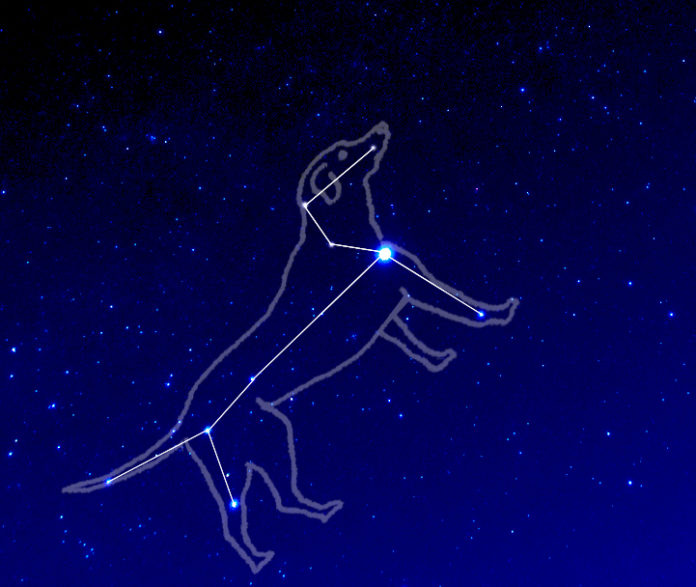It didn’t even occur to me to write an article on the Dog Days of Summer until after they were over. They ended in August, but hey, better late than never!
But before we begin, standard disclaimer: I am not an astronomer, so please forgive me if there are any inaccuracies in any of the information I presented about the astronomy. I have tried to interpret and present the information as best as I could as I understand it.
Now that that’s out of the way, let’s start with the Dog Days—what are they? They are the days from the first rising of the constellation of Canis Major (a.k.a. the Big Dog) to when it descends. These days are regarded as the hottest days of the year in the Northern Hemisphere. What the exact dates are vary depending on where you count the beginning; i.e. do they start when the first star appears or only when the whole constellation is showing? The same is true for when they end. Generally speaking, in the West they’re considered to be July 3 to August 11. (Though Google happily tells me they were between July 12 – August 20 in China. Thanks, Google? Not what I was asking, but okay.)
The brightest star in the constellation is Sirius, also known as the Dog Star. Sirius is a binary star, which means it is made up of two stars that are in close orbit to each other. (I’m getting Star Wars vibes—Tatooine, anyone?) When I say ‘close’, I mean the distance between them is comparable to the distance between our sun and Uranus. Sirius A, the bigger of the two stars, is larger than our sun, while Sirius B is approximately the size of Earth. However, Sirius B is an older star and much denser, meaning that despite its size being similar to Earth, its gravity is 350,000 stronger.
The consistent timing of Sirius’ appearance in our sky means that it was an important star for many ancient cultures to mark beginnings and endings of seasons in their calendars. Though with all celestial bodies being in constant motion, it is predicted that in about 10,000 years Sirius will rise and fall in the middle of winter. Within the constellation of Canis Major, the star is in a part that I would consider the “neck” of the dog, so you can think of it as a nice shiny tag on the collar.
As for the constellation itself, it was the Greeks who initially ascribed this arrangement of stars as a Big Dog in the sky. Who is this amazing dog that was to be forever immortalized in the heavens by the gods? Well, that would be Laelaps. Laelaps was a mythical hunting dog who always caught her prey. Zeus gave her to Europa as a gift, and was then passed down the family line. (I’m guessing the amazing super dog from which prey can never escape is also immortal.) Laelaps makes it down the family line until Queen Procis. (One version of the story says Artemis, goddess of the hunt, gifted Laelaps to Procris directly.) Procis’ husband, Cephalus, decided to send Laelaps to hunt the Teumessian fox—a fox that could never be caught. So, what do you do when you have a dog that always catches its prey chasing after a prey that can never be caught? Well apparently, rather than letting the paradox run its course to find out how it would play out, Zeus decided to turn them both to stone (spoilsport) and put them in the stars as constellations, as Canis Major (Laelaps) and Canis Minor (the Teumessian Fox). Maybe he thought the paradox would rip a hole in the fabric of time and space, I don’t know.
In the thousands of years since the Greeks first saw the shape of a dog in the sky, Canis Major and the star Sirius have continued to inspire our imaginations since. And I think that’s pretty stellar.










